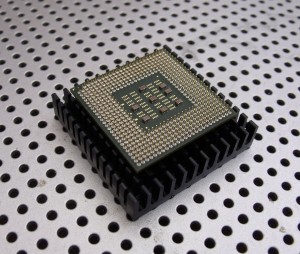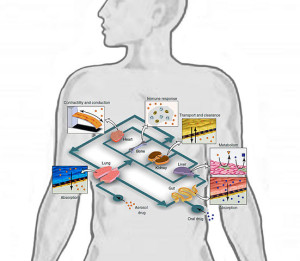This year, a strange but promising technology won the “Design of the Year” Contest at the Design Museum of London. These microchips are able to imitate human organs and tissues.
It’s amazing to see how sustainable technology is improving and making our lives better. A new technology, called Human Organs-on-Chips, wins the best designs of the year award at the London’s Design Museum, beating Google’s self-driving car at the contest this year. It’s developed by Donald Ingber and Dan Dongeun Huh from Harvard University’s Wyss Institute,
Every year, London’s Design Museum holds a competition to choose the best design of the year. In this competition, nominees are chosen from all over the world. There are 6 different categories in the competition. The 6 categories are Transport, Graphics, Architecture, Product, Digital, and Fashion.
Microchips Covered In Human Cells
Microchips covered in human cells won the design of the year award in the product category this year. This win has been a center of focus because it’s the first time in 8 years that a design from the medical field has been chosen as the design of the year winner.
“They identified a serious problem; how do we predict how human cells will behave, and they solved it with elegance and economy of means, putting technology from apparently unrelated fields to work in new ways. They have perhaps unintentionally created something that for a lay man seems to symbolize the essence of life and also happens to be beautiful to look at.” – Deyan Sudjic, Design Museum director.
Implications of organ-on-chip
 The applications for this device could include developing an accurate alternative to traditional animal tests. Animal testings are often opposed by environmentalists and activists because there are potential dangers for animal health, and it can be bad for environment as well.
The applications for this device could include developing an accurate alternative to traditional animal tests. Animal testings are often opposed by environmentalists and activists because there are potential dangers for animal health, and it can be bad for environment as well.
Testing on animals does not predict effects of all drugs on humans accurately because animals don’t mimic the human physiology accurately. Therefore, with the new “human-on-a-chip” safety and efficiency of new drugs, cosmetics, or chemicals can be accurately tested, without any environmental harm or without potentially putting animals in danger.
This device will also help medical science in educational purposes to educate how tissues respond to new drug candidates, in developing new vaccinations, and in developing new safety regulations for drugs and chemicals, which are in use.
“The instrument will control fluid flow and cell viability while permitting real-time observation of the cultured tissues and analysis of complex biochemical functions. This instrumented ‘human-on-a-chip’ will be used to rapidly assess responses to new drug candidates, providing critical information on their safety and efficacy.” Says Wyss Institute at Harvard.
The future of organ-on-chip
Wyss Institute researchers and a team of collaborators are engineering microchips that can accurately mimic the micro-architecture and functions of living organs; such as the heart, lung, intestine, and others.
The Wyss Institute is also developing an automated instrument that would successfully mimic the whole human body. They are planning to create different kinds of “organ-on-chip” devices that mimic different human organs and will be able to recreate the whole human body by connecting them together. In this way, like a human body where all the different organs are connected together and work as a system, an accurate model can be created.

“Conceptual Schematic of a Human-on-a-Chip” by Timothy.ruban – Own work. Licensed under CC BY-SA 3.0 via Wikimedia Commons.
You can imagine the implications of these microchips as they develop in the future. According to the Wyss Institute at Harvard, “Each individual ‘organ-on-chip’ is composed of a clear flexible polymer about the size of a computer memory stick that contains hollow micro-fluid channels lined by living human cells. Because the micro devices are translucent, they provide a window into the inner workings of human organs.”
Every invention and development in science and technology opens up new doors of possibilities for us for a better sustainable future. We would continue to develop devices and technology, and ensure that human beings and the planet survive into the future, taking away all the negativity and replacing them with sustainable technology.
Hope you will be a part of the sustainable revolution. To learn more about the Environmental Professionals Network call us at 303-495-3705 or you could email us at [email protected] or Click here to book a meeting,
We’d love your feedback and comments on this article. Please feel free to add your comments in the comment box below or on our Facebook page, we’d really appreciate it.
Source: Environmental Professionals Network
Related articles and resources:
- Alternative Energy Sources – What is on the Horizon? | Environmental Professionals Network
- Design Museum
- Organs-on-Chips : Wyss Institute at Harvard
- Wyss Institute at Harvard
- Microchips lined with human cells could make animal testing obsolete | Inhabitat – Sustainable Design Innovation, Eco Architecture,
- Microchips lined with human cells are the winner of the Design of the Year contest : TreeHugger



